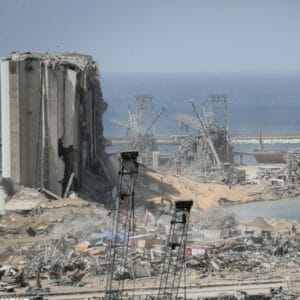The blasts at a Beirut warehouse storing highly explosive ammonium nitrate on Aug. 4 killed at least 220 people, caused 7,000 injuries and left as many as 300,000 people homeless in Lebanon’s capital city.
While there has been wide speculation on the cause of the explosion, including fireworks, gunpowder and paint housed in close proximity, the ammonium nitrate stored for six years in a warehouse without even basic hazardous materials safeguards seems universally considered the explosive component in the incident.
Read the Q&A with sustainability scientist Kiril Hristovski, an associate professor in Arizona State University’s Polytechnic School and the program chair for the Environmental and Resource Management Program with expertise in hazardous materials management.
